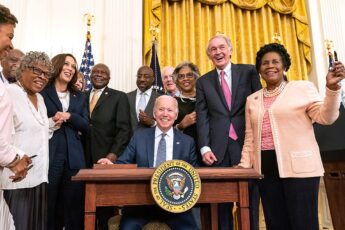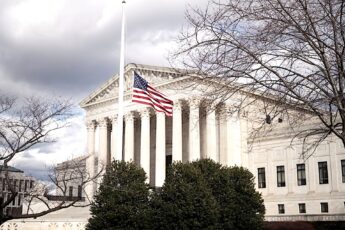I can’t imagine teaching civics and government without political cartoons—they are essential to the subject.
They make the best entry point for introducing concepts and diving deeper into diverse viewpoints on political issues.
Head over to my blog post, How to Teach Political Cartoons, where I detail the POPES process I’ve used for years. Then, download your FREE lesson kit to get started.
This analysis strategy works well for bell ringers to cover current political news and as part of the main lesson to teach civics concepts.
Certain topics, I’ve found over the years, are perfect for using cartoons to teach. So here I’ve outlined some activity ideas for using them to help you teach five key government concepts.
Finding Great Political Cartoons
First, though, we need to find some good cartoons!
I don’t link to any specific cartoons in this blog post simply because the second I do, they’re dated!
Usually, only a few cartoons are perennial enough to use the following year, and I’m constantly swapping in fresh ones my students can best relate to. You’ll want to do this as well.
Here are my go-to spots for grabbing high-resolution current and historical political cartoons:
Daryl Cagle’s searchable database of current cartoons
The Week’s and US News’s collections of recent cartoons
Library of Congress’s collection of over 800 cartoons from throughout American history and their dedicated Herbert Block collection that spans much of the late 1900s
Wikimedia Commons’ collection of Puck and Judge magazine covers from the late 1800s and early 1900s
Teaching How to Analyze Cartoons
As I said above, I use the POPES method I’ve developed over the years. Before using cartoons to teach content, students need to have the skills to understand them.
Be sure to spend time teaching how to analyze political cartoons before your first lesson that uses them! My FREE Political Cartoon Analysis Kit is a complete how-to lesson that does this for you.
Okay, now that’s all taken care of, let’s dive into civics concepts that are perfect for using political cartoons to teach. I’ve never found a shortage of cartoons to help students learn and develop claims on these five topics.
Principles of the Constitution
After introducing the different principles of the US Constitution, I have my students identify them in political cartoons depicting events that relate to each.
For example, I’ll pick a cartoon of the President and Congress at odds over a recent veto to illustrate checks and balances. Or a cartoon dealing with Election Day for popular sovereignty.
You can search using the principles themselves, but you don’t want the cartoon actually to say the principle. That’s why I also search for recent events that have involved the concept.
I’ll post these cartoons around the room as stations. Students first analyze them and then identify which principle each best depicts.
Different Forms of Governments
I do an almost identical lesson sequence when we learn the different types of government systems.
Here, it’s helpful to use countries I’ve already given as examples of the various types when I first defined them.
For example, a cartoon of the UK’s King Charles trying to fill the shoes of his mother to illustrate monarchy.
I like how the Cagle database includes international cartoonists, to which you can limit your search.
Find cartoons depicting each system of government that your students need to learn and make matching cards for formative practice.
Voting Issues & Attitudes
During my Voting & Election Unit, I search terms like “voting” or “Election Day” or, even more specifically, for issues like “voter turnout” or “vote by mail.”
You should have no problem finding a variety of cartoons that illustrate attitudes about the upcoming election and voting rights and access.
Use cartoons from across the nation to introduce voting issues affecting different states. This helps emphasize how, while voting is a federal right, how we vote is handled at the state level.
If your state is vote-by-mail only, share cartoons depicting long voter lines, for example.
You can also have students agree or disagree with the cartoons’ punchline, providing evidence from what they’ve learned to support their position.
For example, select cartoons that argue things like voter apathy among young people or that voting is unnecessarily complicated.
Three Branches
While covering each of the Three Branches, it’s a no-brainer to use cartoons to familiarize students with current issues with each branch.
Pull a few cartoons that depict both hyper-current and more perennial issues, like gridlock in Congress, the President struggling with sagging popularity, or the Supreme Court announcing a controversial decision.
As important as it is to teach the Constitutional logistics of each branch, it is to teach the issues of how those branches operate in real life, and cartoons are perfect for this!
During this unit, cartoons like these make perfect bell ringer activities.
Amendments & Civil Liberties
In my Civil Liberties unit, I use cartoons in a few ways. First, historical cartoons are a great way to illustrate that so many essential rights have not always been granted.
Cartoons pushing for or celebrating the ratification of various amendments make excellent source material: the 17thAmendment to popularly elect senators, the 19th Amendment to grant women the right to vote, and the 26thAmendment to lower the voting age to 18.
These make an easy matching activity for students to pair to the amendment they are dealing with.
Or, as you are exploring the Supreme Court’s current docket, pull some cartoons that deal with these court cases. They help show the dilemma and controversy of rights involved.

I hope these ideas have sparked activity ideas for using political cartoons to support learning in your Civics or Government class. Grab my FREE Political Cartoons Analysis Kit for a done-for-you starter kit to get going with teaching with cartoons!
Feature image photo credit: Bank Phrom








